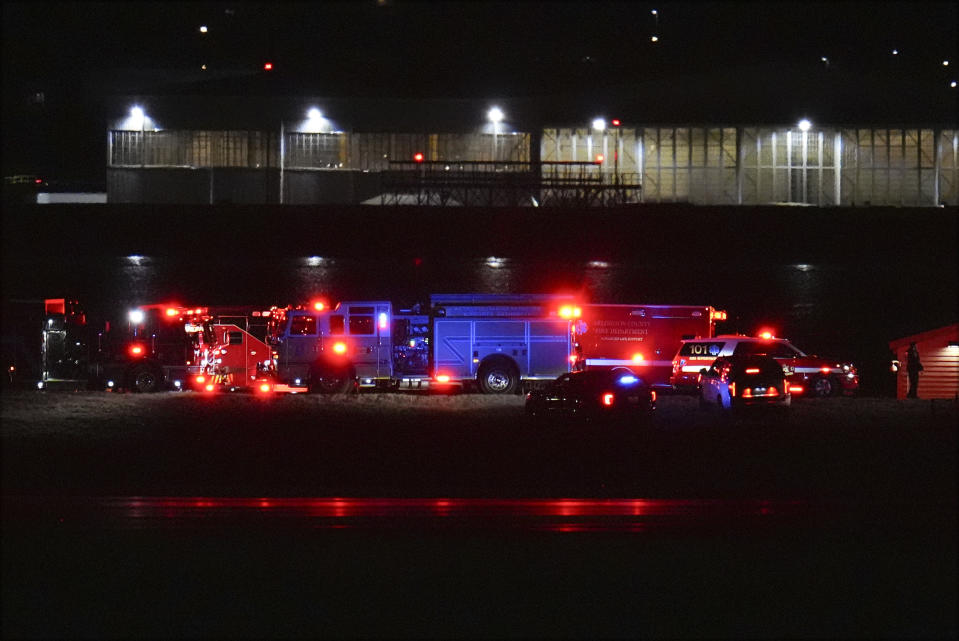A jet carrying 60 passengers and four crew members collided Wednesday with an Army helicopter while landing at Ronald Reagan National Airport near Washington, prompting a large search-and-rescue operation in the nearby Potomac River.
There was no immediate word on casualties or the cause of the collision, but all takeoffs and landings from the airport were halted as helicopters from law enforcement agencies across the region flew over the scene in search of survivors. Inflatable rescue boats were launched into the Potomac River from a point along the George Washington Parkway, just north of the airport.
President Donald Trump said he had been “fully briefed on this terrible accident” and, referring to the passengers, added, “May God Bless their souls.”
The Federal Aviation Administration said the midair crash occurred around 9 p.m. EST when a regional jet that had departed from Wichita, Kansas, collided with a military Blackhawk helicopter while on approach to an airport runway. It occurred in some of the most tightly controlled and monitored airspace in the world, just over three miles south of the White House and the Capitol.
Investigators will try to piece together the aircrafts’ final moments before their collision, including contact with air traffic controllers as well as a loss of altitude by the passenger jet.
American Airlines Flight 5342 was inbound to Reagan National at an altitude of about 400 feet and a speed of about 140 miles per hour when it suffered a rapid loss of altitude over the Potomac River, according to data from its radio transponder. The Canadian-made Bombardier CRJ-701 twin-engine jet, manufactured in 2004, can be configured to carry up to 70 passengers.
A few minutes before landing, air traffic controllers asked the arriving commercial jet if it could land on the shorter Runway 33 at Reagan National and the pilots said they were able. Controllers then cleared the plane to land on Runway 33. Flight tracking sites showed the plane adjust its approach to the new runway.
Less than 30 seconds before the crash, an air traffic controller asked the helicopter if it had the arriving plane in sight. The controller made another radio call to the helicopter moments later: “PAT 25 pass behind the CRJ.” Seconds after that, the two aircraft collided.
The plane’s radio transponder stopped transmitting about 2,400 feet short of the runway, roughly over the middle of the river.
Video from an observation camera at the nearby Kennedy Center showed two sets of lights consistent with aircraft appearing to join in a fireball.
The collision occurred on a warm winter evening in Washington, with temperatures registering as high as 60 degrees Fahrenheit, following a stretch days earlier of intense cold and ice. On Wednesday, the Potomac River was 36 degrees Fahrenheit, according to the National Oceanic and Atmospheric Administration. The National Weather Service reported that wind gusts of up to 25 mph were possible in the area throughout the evening.

